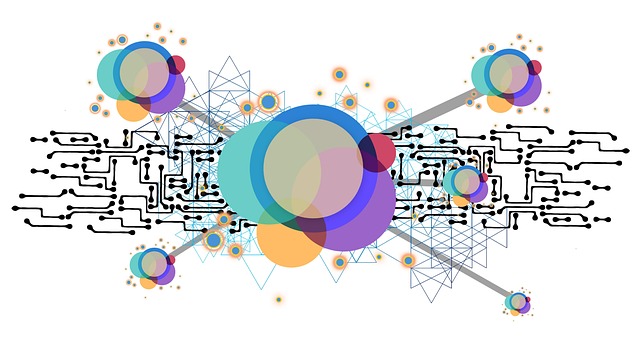The Oregon Department of Human Services (DHS) child welfare system is a complex yet vital network designed to protect vulnerable children and families. Understanding the DHS welfare procedures, including key terms like safety planning and substance abuse assessment, is crucial for parents, caregivers, and professionals. The initial contact sets the tone, with caseworkers dedicated to ensuring the child's safety. DHS follows specific processes involving comprehensive assessments, collaboration, and confidentiality. Case planning and service coordination are essential for aligning services with family needs. Legal custody options include temporary custody, permanent guardianship, or adoption. Post-intervention, families have access to resources like case management, counseling, and housing support to navigate the process successfully.
Navigating Oregon DHS (Department of Human Services) child welfare procedures can be complex, but understanding the process is crucial for families facing intervention. This comprehensive guide provides an overview of the DHS child welfare process, from initial contact and reporting to assessment, case planning, court involvement, and post-intervention support. By familiarizing yourself with these steps, you’ll be better equipped to collaborate effectively with DHS and secure the best possible outcome for your family.
- Understanding Oregon DHS Child Welfare: An Overview of Key Terms and Definitions
- Initial Contact and Reporting: What to Expect When Reaching Out to DHS
- Assessment and Investigation: The Process for Ensuring Child Safety
- Case Planning and Service Provision: Collaborating with DHS to Meet the Needs of Your Family
- Court Involvement and Permanency Planning: Navigating Legal Proceedings and Options for Long-Term Well-being
- Resources and Support for Families: Accessing Services and Maintaining Stability After DHS Intervention
Understanding Oregon DHS Child Welfare: An Overview of Key Terms and Definitions

Oregon’s Department of Human Services (DHS) child welfare system is a complex network designed to protect and support vulnerable children and families. Understanding this process is crucial for anyone involved, whether as a parent, caregiver, or professional. The Oregon DHS child welfare process involves a series of steps and procedures that aim to ensure the safety, well-being, and stability of children in need. This includes assessments, investigations, case management, and various support services tailored to each family’s unique circumstances.
Key terms often come up when navigating the DHS process, such as ‘safety planning,’ ‘substance abuse assessment,’ and ‘family-centered approach.’ Safety planning refers to strategies to keep children secure while addressing potential risks. A substance abuse assessment evaluates a parent’s or caregiver’s drug or alcohol use and its impact on child welfare. The family-centered approach emphasizes collaboration and empowering families, recognizing them as experts in their own lives. This guide provides an overview of these terms and many others, helping individuals better understand their rights and the Oregon DHS child welfare process.
Initial Contact and Reporting: What to Expect When Reaching Out to DHS

When reaching out to Oregon DHS for child welfare concerns, the initial contact sets the tone for the entire process. It’s important to approach this interaction with clarity and calmness, as the department receives a high volume of reports. Expect a professional and empathetic response from the caseworkers; their primary goal is to ensure the safety and well-being of the child. During this initial contact, you can expect a detailed discussion about your concerns, including specific observations or incidents that have prompted your report.
The DHS welfare procedures involve a thorough assessment to determine the best course of action. They will gather information from multiple sources, including yourself and other involved parties, to gain a comprehensive understanding of the situation. This process is designed to be collaborative, so actively participating in interviews and providing relevant documentation will help streamline the evaluation. The department’s child welfare process guide ensures consistency and fairness throughout each step, aiming to make this challenging time as manageable as possible for all involved.
Assessment and Investigation: The Process for Ensuring Child Safety

The Oregon Department of Human Services (DHS) child welfare process begins with a comprehensive assessment and investigation when a concern for a child’s safety is reported. This initial step is paramount in ensuring the well-being of the child and guiding subsequent actions. DHS receives reports from various sources, including concerned citizens, healthcare providers, and schools, which trigger an evaluation to determine if there’s reasonable cause to believe a child is at risk of abuse or neglect.
During this phase, trained professionals conduct thorough interviews with all family members and relevant individuals to gather information. They also inspect the living environment and review medical and school records. The investigation aims to verify the facts presented in the report, identify any immediate safety hazards, and determine the best course of action to protect the child while ensuring their privacy and confidentiality throughout the process.
Case Planning and Service Provision: Collaborating with DHS to Meet the Needs of Your Family

Navigating the Oregon DHS child welfare process requires a deep understanding of case planning and service provision. This collaborative effort involves working closely with the Department of Human Services (DHS) to ensure that your family’s unique needs are met effectively. The first step is to engage actively in the case planning process, where you and your assigned case manager will jointly develop a plan tailored to address specific issues affecting your child’s well-being. This plan outlines short-term and long-term goals, services required, and timelines for achieving them.
Effective collaboration with DHS means staying engaged throughout the process, attending meetings, and providing necessary documentation. It also involves openly communicating any concerns or changes in your family’s circumstances. By working hand-in-hand with DHS, you can ensure that the provided services align with your family’s needs and goals. This collaborative approach fosters a supportive environment, promoting positive outcomes for both your family and the child welfare process.
Court Involvement and Permanency Planning: Navigating Legal Proceedings and Options for Long-Term Well-being

When a child’s safety is at risk, Oregon Department of Human Services (DHS) steps in to initiate the child welfare process. This involves a thorough assessment and investigation to determine the best course of action for the child’s protection. If necessary, DHS may file a petition in court to gain legal custody of the child, which triggers formal legal proceedings. Understanding this complex system is crucial for families involved.
Court involvement offers various options for long-term well-being, including temporary custody, permanent guardianship, or adoption. Navigating these legal processes requires guidance from legal representatives and DHS caseworkers. By working together, they can ensure that the child’s interests are protected while exploring permanent solutions that provide stability and a loving home environment. A comprehensive guide to the Oregon DHS child welfare process empowers families to actively participate in decisions affecting their future.
Resources and Support for Families: Accessing Services and Maintaining Stability After DHS Intervention

After a DHS intervention, families in Oregon have access to various resources and support services designed to help them navigate the child welfare process and maintain stability. These services can include case management, counseling, parenting classes, financial assistance, and housing support. Organizations like the Oregon Department of Human Services (DHS) and local community agencies play a crucial role in connecting families with these resources.
Understanding the DHS child welfare process is essential for families to effectively engage with service providers and make informed decisions. The DHS process guide offers a comprehensive overview of each step, from initial contact and assessments to case planning and family reunification. By staying informed and actively participating in the process, families can better ensure their rights are protected and work towards achieving positive outcomes for their children.
